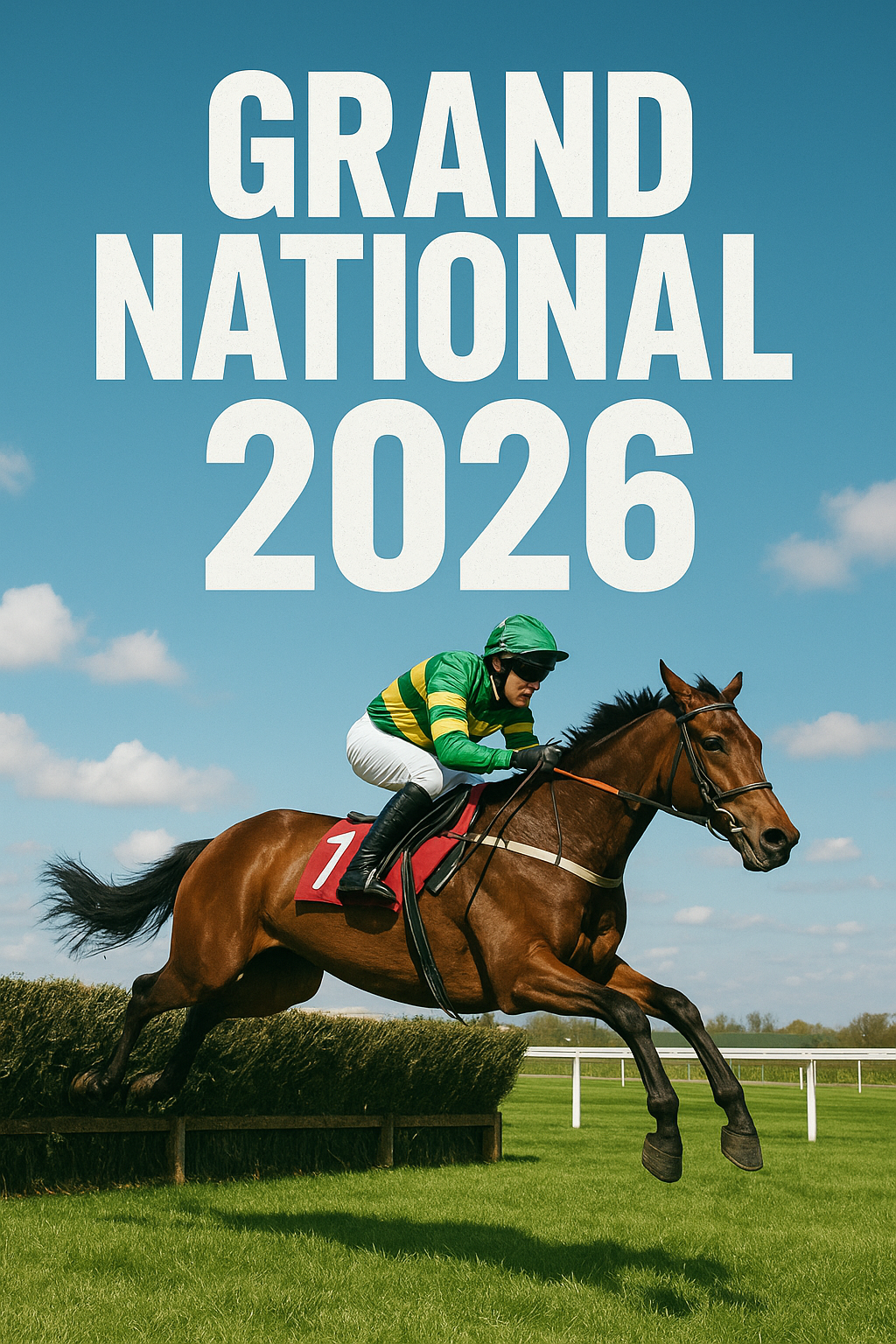Grand National 2026
 The 2026 Grand National is scheduled for 4.00pm on Saturday, April 11, 2026, when it will, as usual from the undisputed highlight of the three-day Aintree Festival. The Grand National has changed, drastically, in recent years, but remains one of the most popular sports betting events the country, not least with ‘once-a-year’ punters. Of course, there’s many a slip twixt cup and lip, especially in the sphere of National Hunt racing, but ante-post betting for the 2026 Grand National is available months in advance, so now is as good a time as any for an early look at the likely contenders.
The 2026 Grand National is scheduled for 4.00pm on Saturday, April 11, 2026, when it will, as usual from the undisputed highlight of the three-day Aintree Festival. The Grand National has changed, drastically, in recent years, but remains one of the most popular sports betting events the country, not least with ‘once-a-year’ punters. Of course, there’s many a slip twixt cup and lip, especially in the sphere of National Hunt racing, but ante-post betting for the 2026 Grand National is available months in advance, so now is as good a time as any for an early look at the likely contenders.
At the time of writing, the Grand National market is headed by Haiti Couluers (16/1), trained by Rebecca Curtis, who won four of his five starts over fences, culminating with the Irish Grand National at Fairyhouse, in his novice campaign in 2024/25. The British Horseracing Authority (BHA) handicapper has had his say, raising Haiti Couluers a further 11lb for his Fairyhouse success, but he brings untapped potential and, with underfoot conditions at Aintree liekly to suit, appears to have bright prospects.
Perennial Irish champion trainer Willie Mullins clearly knows what is required to win the Grand National, having done so in 2024 and 2025, not to mention saddling five of the first seven horses home in the 2025 renewal. Unsurprisngly, both his recent winners, I Am Maximus (20/1) and Nick Rockett (25/1), feature prominently in the ante-post betting, as does Iroko (20/1), trained by Oliver Greenall and Josh Guerriero, who was sent off favourite in 2025 and prevented a Mullins-trained 1-2-3-4 when finishing fourth behind Nick Rockett, I Am Maximus and Grangeclare West. The latter is currently on offer at 33/1, the same price at which he started in 2025, but it is not difficult to make a case for any of the first four home in 2025.
At longer odds, Resplendent Grey (50/1), trained by Olly Murphy, has 11 lengths to find with Haiti Couluers (to whom he was conceding 7lb) on their form in the National Hunt Chase at the 2025 Cheltenham Festival, but finished the season by winning the Bet365 Chase at Sandown, from 1lb out of the handicap, and remains open to further progress. So, too does Mr. Vango (66/1), trained by Sara Bradstock, who won the London National at Sandown and the Midlands Grand National at Uttoxeter in 2024/25, but was balloted out of the Grand National proper; granted soft going, he could prove a very lively outsider.

 The Industrial Revolution saw urbanisation intensify. Cities grew rapidly but for the poorest, housing and sanitisation remained inadequate. Workhouses reflected the harsh realities for many. Outbreaks of Cholera took their toll on public health. Huge investment added to ‘Railway Mania’ which peaked mid-decade transforming society. Queen Victoria got married to Prince Albert in 1840. The British Empire expanded. China was humiliated with their loss in the First Opium War, which saw them concede much in The Treaty of Nanking 1842. It was called a ‘Century of Humiliation’ which saw Hong Kong Island ceded to Britain. New Zealand became a British colony in 1840. Expansion continued in Africa and India. However, closer to home the Great Famine (Potato Famine) devastated Ireland with repeated crop failures. Over 1 million died and another million emigrated (mainly to the United States). The British Government were criticised for their inadequate or indifferent relief policies. With an emphasis on free trade, The Bank Charter Act (1844) regulated bank note issuance. The Victorian culture of respectability, family and duty held strong. Charles Dickens published major works including A Christmas Carol (1843).
The Industrial Revolution saw urbanisation intensify. Cities grew rapidly but for the poorest, housing and sanitisation remained inadequate. Workhouses reflected the harsh realities for many. Outbreaks of Cholera took their toll on public health. Huge investment added to ‘Railway Mania’ which peaked mid-decade transforming society. Queen Victoria got married to Prince Albert in 1840. The British Empire expanded. China was humiliated with their loss in the First Opium War, which saw them concede much in The Treaty of Nanking 1842. It was called a ‘Century of Humiliation’ which saw Hong Kong Island ceded to Britain. New Zealand became a British colony in 1840. Expansion continued in Africa and India. However, closer to home the Great Famine (Potato Famine) devastated Ireland with repeated crop failures. Over 1 million died and another million emigrated (mainly to the United States). The British Government were criticised for their inadequate or indifferent relief policies. With an emphasis on free trade, The Bank Charter Act (1844) regulated bank note issuance. The Victorian culture of respectability, family and duty held strong. Charles Dickens published major works including A Christmas Carol (1843). The height of the Victorian era.
The height of the Victorian era.